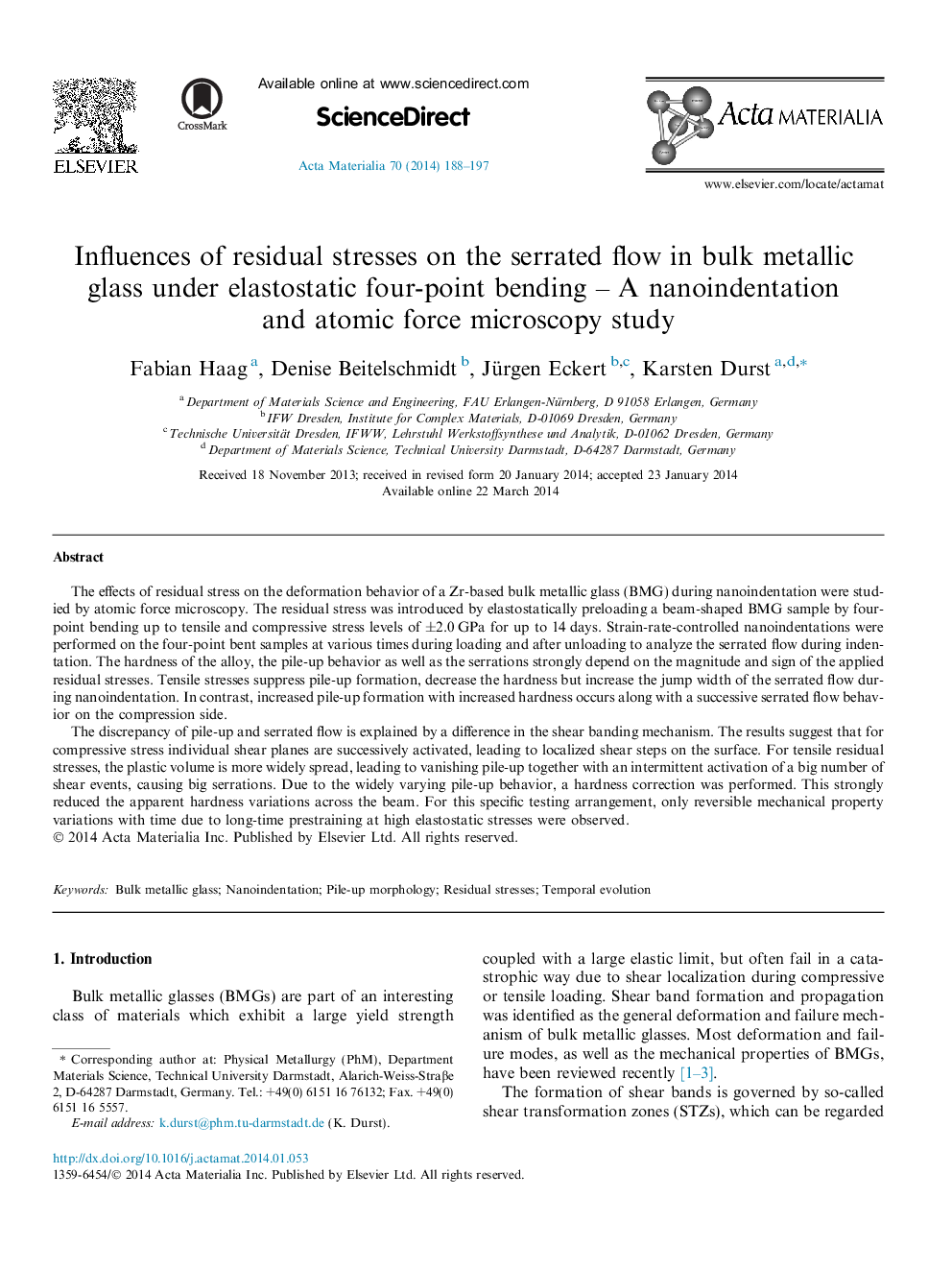| Article ID | Journal | Published Year | Pages | File Type |
|---|---|---|---|---|
| 7882120 | Acta Materialia | 2014 | 10 Pages |
Abstract
The discrepancy of pile-up and serrated flow is explained by a difference in the shear banding mechanism. The results suggest that for compressive stress individual shear planes are successively activated, leading to localized shear steps on the surface. For tensile residual stresses, the plastic volume is more widely spread, leading to vanishing pile-up together with an intermittent activation of a big number of shear events, causing big serrations. Due to the widely varying pile-up behavior, a hardness correction was performed. This strongly reduced the apparent hardness variations across the beam. For this specific testing arrangement, only reversible mechanical property variations with time due to long-time prestraining at high elastostatic stresses were observed.
Related Topics
Physical Sciences and Engineering
Materials Science
Ceramics and Composites
Authors
Fabian Haag, Denise Beitelschmidt, Jürgen Eckert, Karsten Durst,
